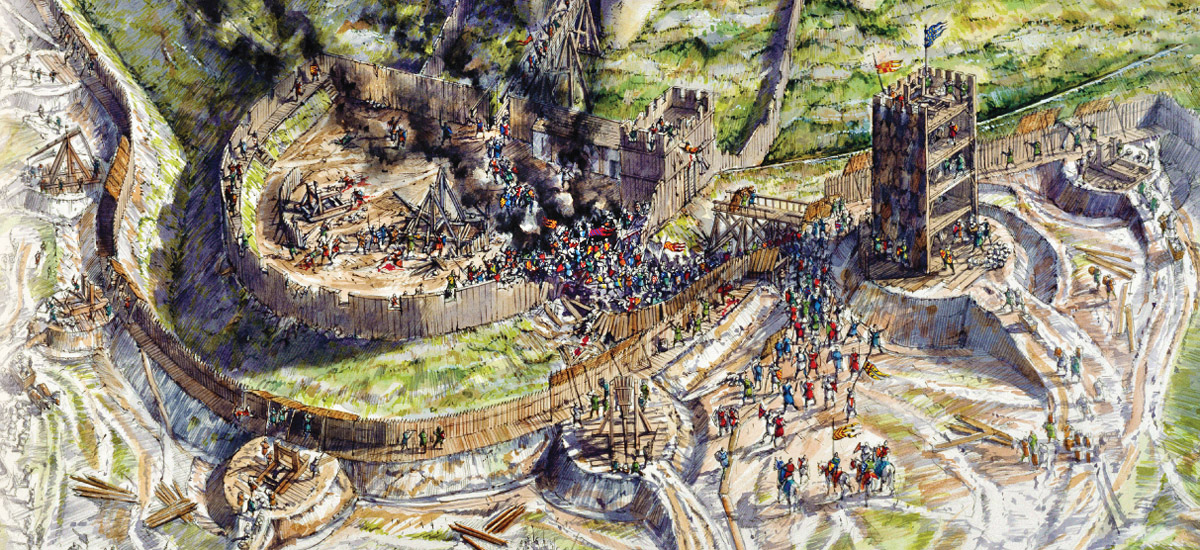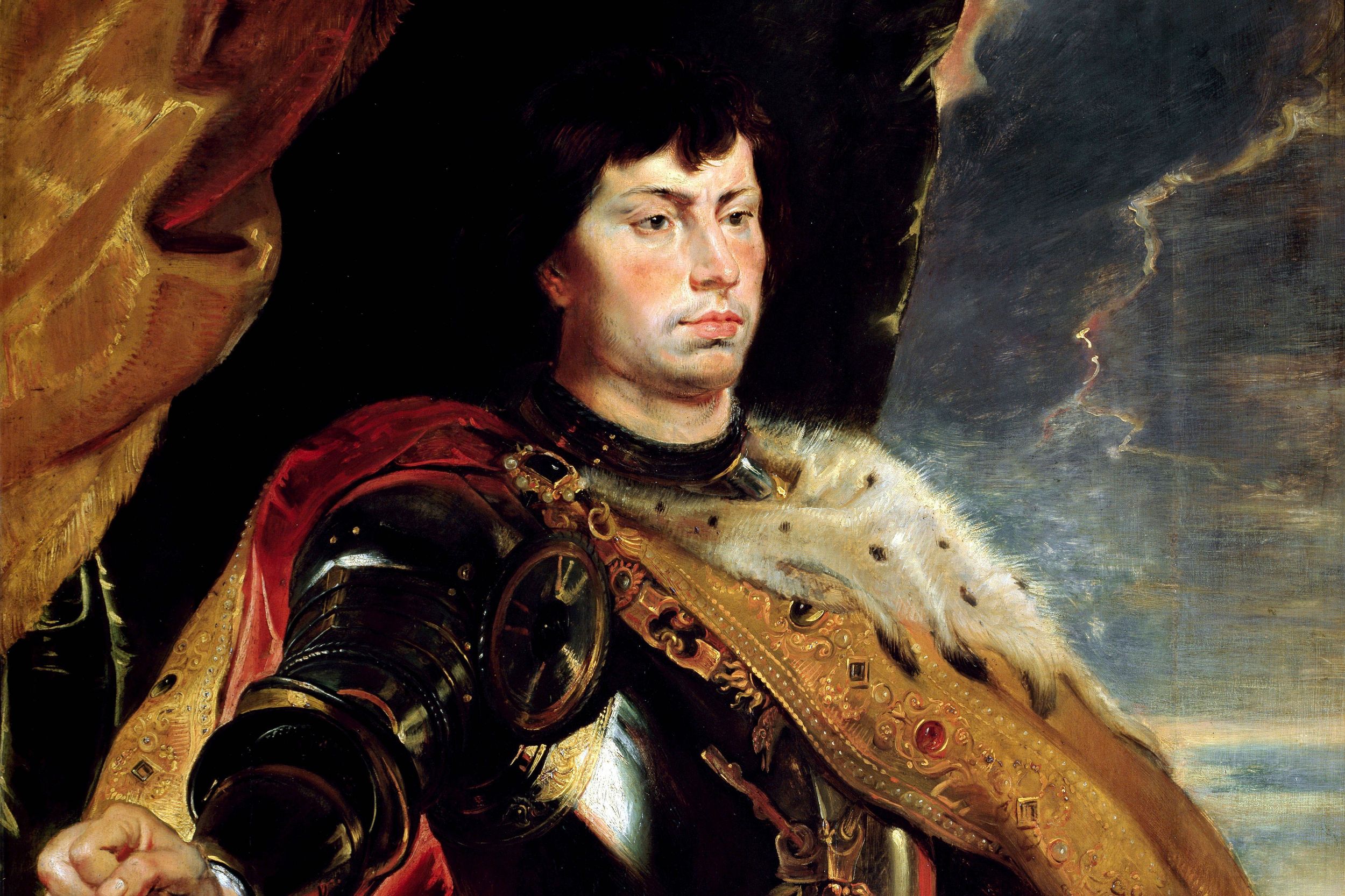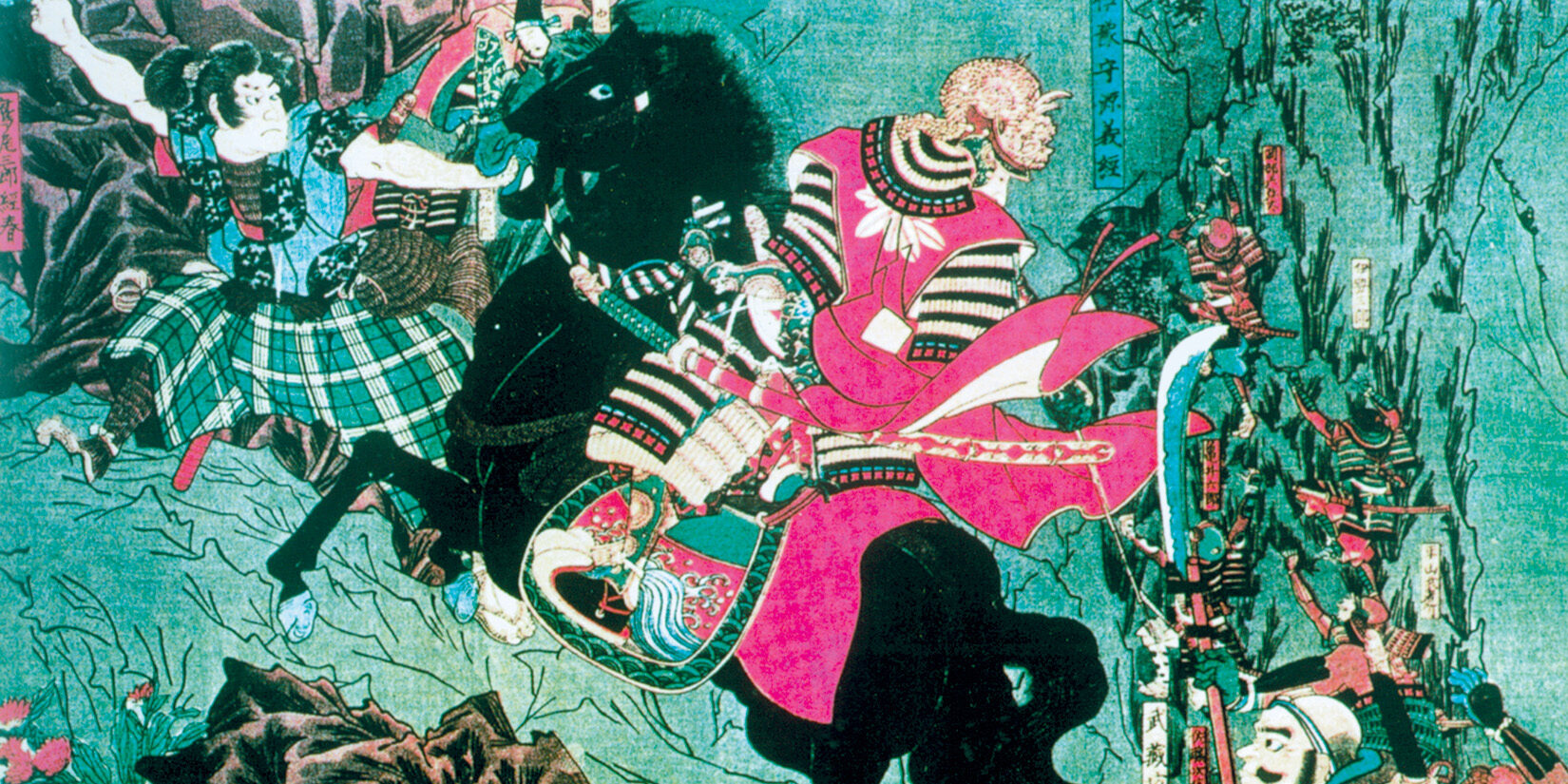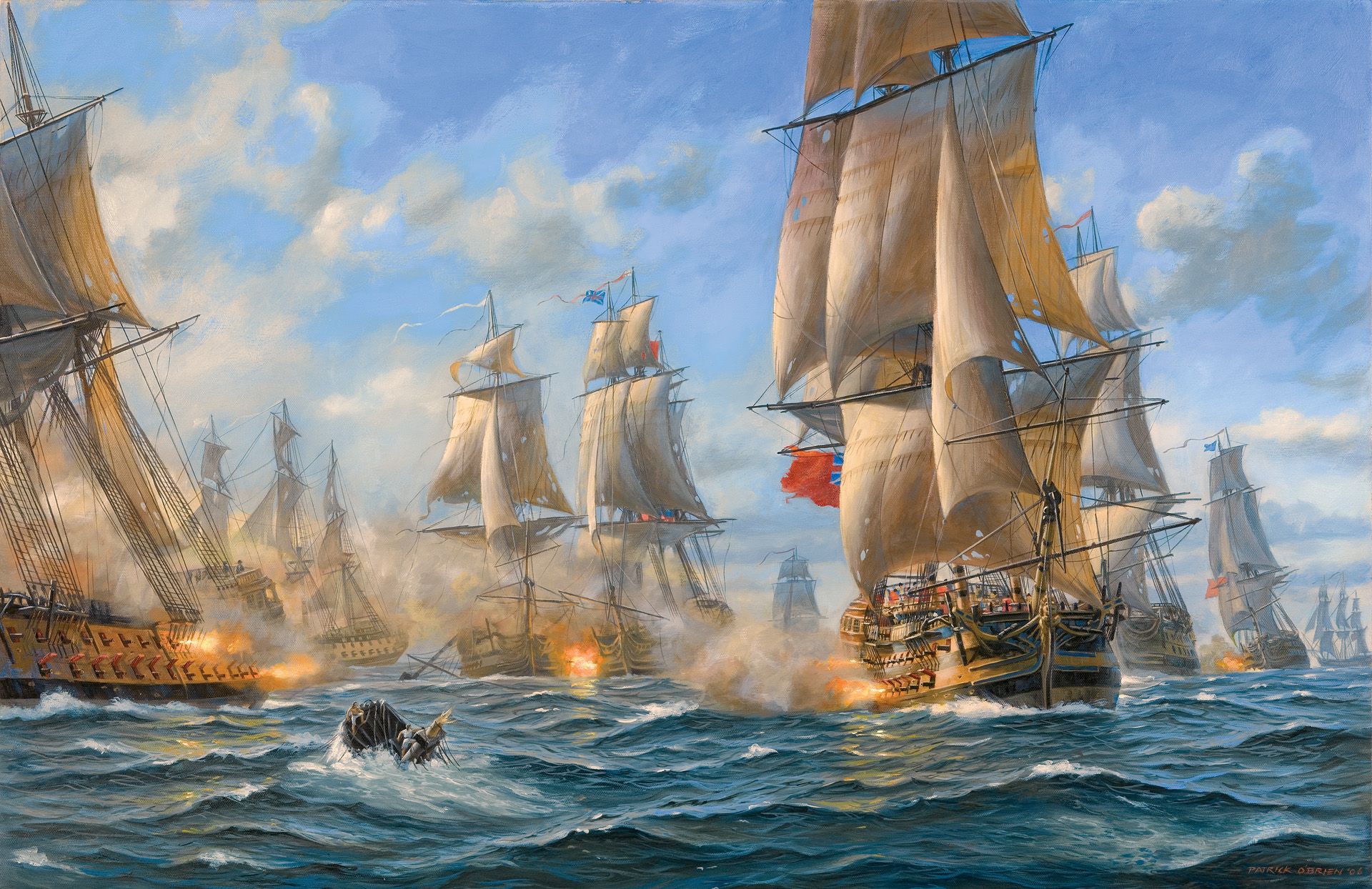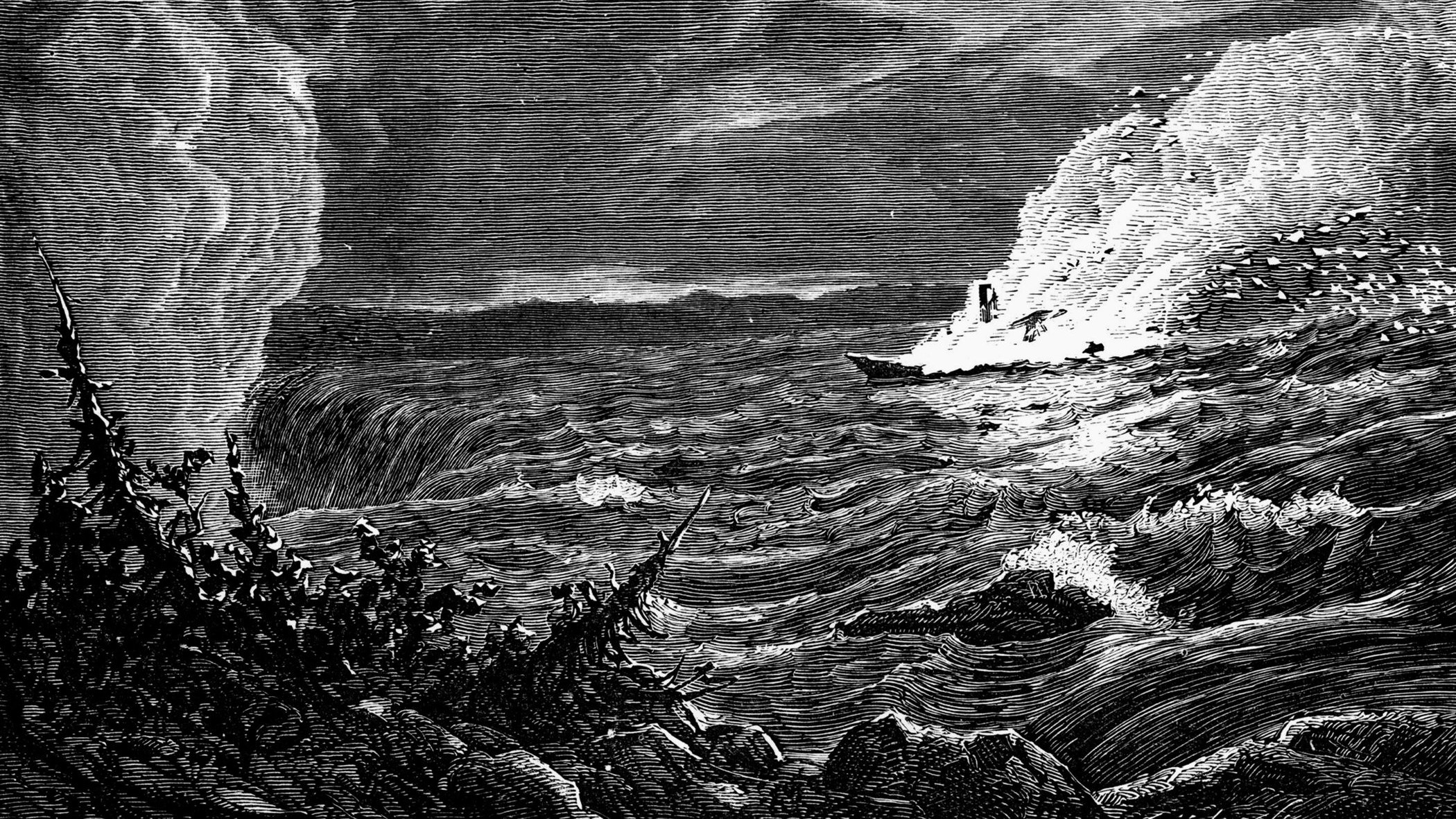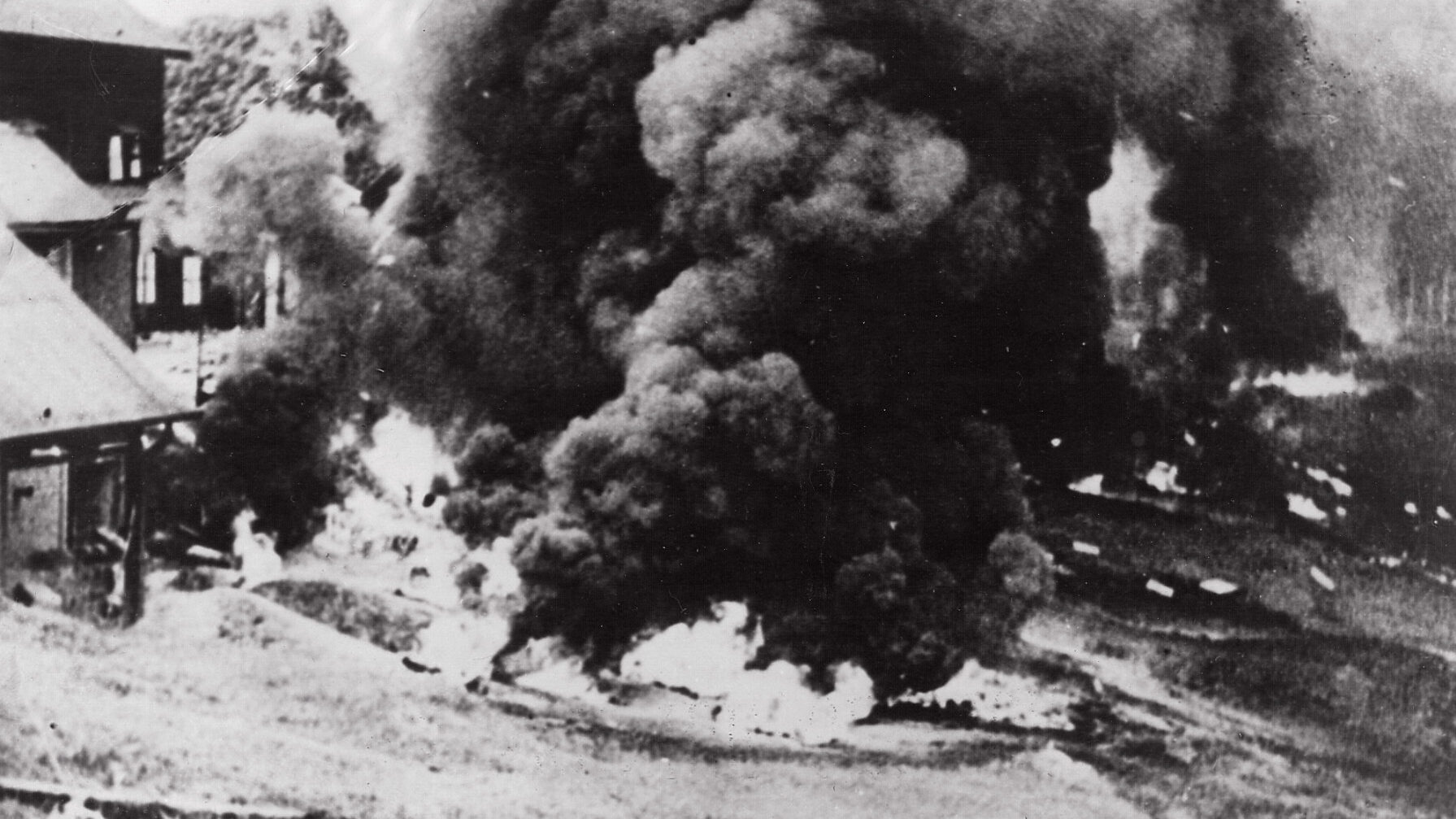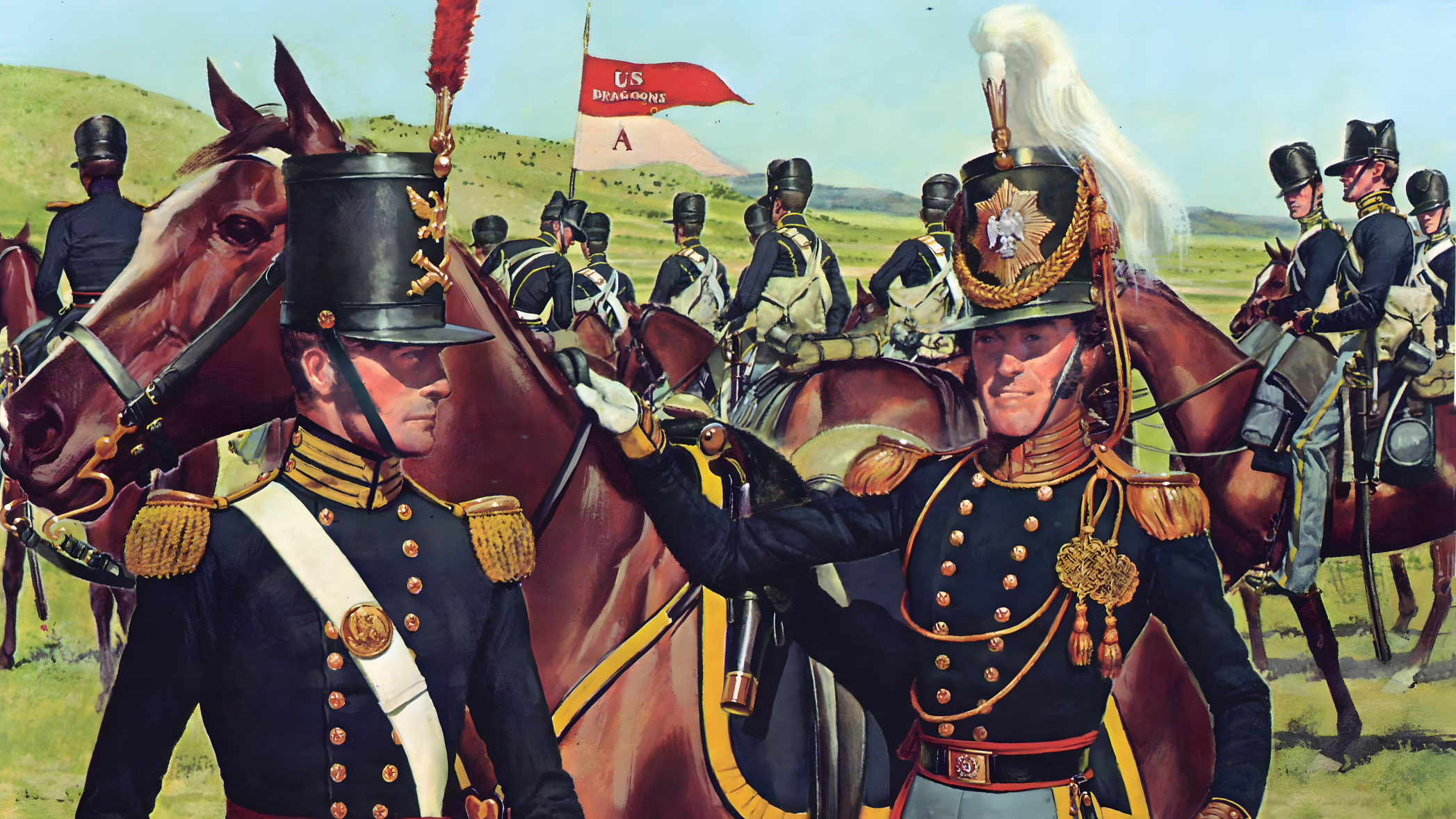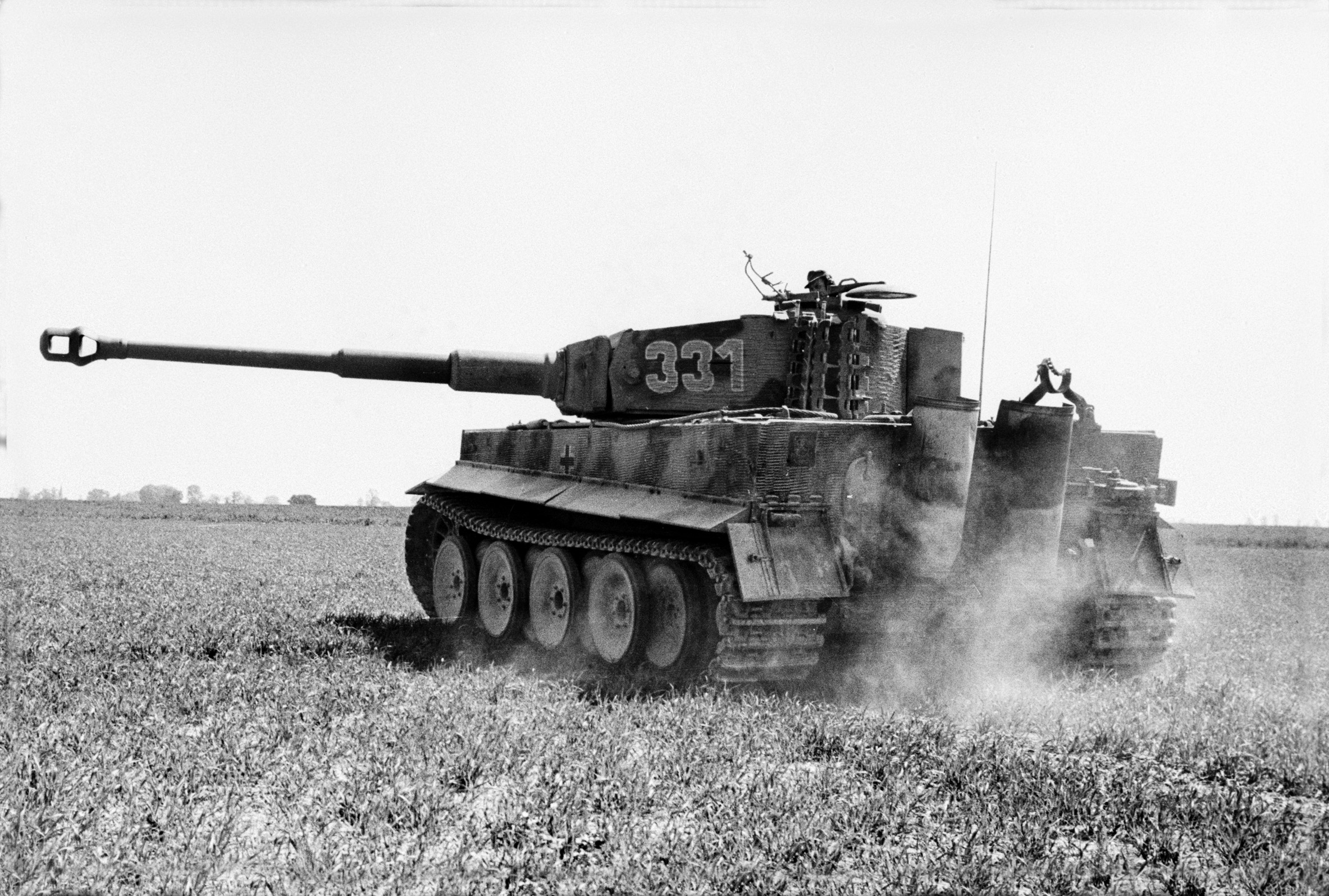By Eric Niderost
In the summer of 1216 a large French army appeared just outside the gates of Dover Castle, a magnificent fortress on the southeast coast of England. The army was led by Prince Louis of France, son and heir of King Philip II “Augustus” of France, who sought to win the English crown. And yet this was not an invasion in the usual sense. Disaffected English barons, fed up with high taxes and a string of embarrassing defeats, had invited Louis to depose King John and seize the throne.
Prince Louis seemed to be on a roll, with the political momentum increasingly in his favor. Even William Longsword, King John’s own half brother, had declared for the French outsider. Yet Dover Castle, the greatest fortress in England, remained steadfastly loyal to the discredited English king. Louis had to take the fortress in Kent if he hoped to maintain his credibility.
The Dover Castle knights would mount their war horses every so often and file out of the main gate in a stately and obviously defiant parade. They rode nonchalantly, as if traveling to a tournament, completely ignoring the Gallic host who must have stood in awe of their behavior. The sun danced and sparkled on their helmets, colorful pennants flapped from long lances, and still the English knights paid their enemies no heed.
The knights rode in the no-man’s land that fronted Dover Castle. The snaking, multihued procession was all the more of a spectacle because of the colored surcoats many of them wore. But the knights were outnumbered 10 to one, and they had no intention of attacking the siege works that the French were in the process of building.
After riding about for a time, collectively snubbing their noses at their besiegers, the knights filed back into Dover Castle. It was said that a French crossbowman, mesmerized by the spectacle, got too close and was captured by the garrison knights and triumphantly brought back as a prisoner.
Perhaps stung by this act of defiance, Prince Louis had inaugurated the formal siege in the middle of July 1216. Mangonels and perriers, two types of siege engines, started lobbing shot at the castle walls. The future of England, as well as the fate of the Plantagenet dynasty, hung in the balance.
The siege of Dover Castle was rooted in both the politics of the period and the complex personality of King John. John was unscrupulous, vindictive, and sometimes cruel, but he was not the stereotypical black-hearted villain so vividly portrayed in the Robin Hood legends. He also was plagued by bad luck, including having a reign that coincided with the papacy of Innocent III, considered by most historians as the greatest and most powerful of medieval popes. John’s barons, many of whom were magnates of great power and wealth in their own right, were just becoming aware of their own potential power. What is more, John had a deeply flawed and contradictory nature. These factors combined to create a potentially disastrous situation.
When John came to the throne in 1199 he inherited not just a kingdom, but a far-flung empire. Overseas possessions included Normandy, Anjou, Maine, Touraine, Aquitaine, Poitou, and Auvergne. This vast expanse, generally labeled the Angevin Empire, encompassed about half of France. Indeed, his possessions were actually greater in extent than those of French monarch Philip II, who was John’s nominal overlord. John may have been king of England, but as Duke of Normandy and Aquitaine and Count of Anjou, he was Philip’s vassal or underling, owing the French king loyalty, service, and obedience.
John was energetic, hard working, and diligent. He was a sound judicial administrator who instituted some legal reforms and even tried some small cases himself. If a matter did not involve his interests he could be amazingly fair, impartial, and even wise.
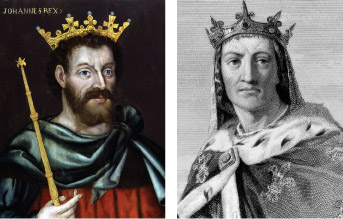
John’s troubles began in the bedroom, not the council chamber. He became enamored with Isabella of Angouleme, whom he married in 1200. Isabella was the daughter and heiress of Audemar, Count of Angouleme. It helped that Angouleme was a strategic territory, but John seems to have genuinely been smitten by her. Simply put, he was head over heels in love.
Isabella was said to be a beauty, a second Helen of Troy, and the fact that she was 12 or 13 made little difference to John or his contemporaries. The 12th century went by biology, not calendar age. If you experienced puberty and were capable of bearing a child, you were of age. The real scandal was that she had been betrothed to another, Hugh de Lusignan. Lusignan was a powerful magnate from Poitou, and he appealed to John’s liege lord, King Philip, for justice.
Philip demanded that John appear in person to explain himself, but when the English king refused, hostilities began. Of course, Philip did not really care who John married, but the matter offered the King of France an opportunity to take direct possession of Anjevin lands. The king of France was an old hand at dynastic struggles, having already fought with John’s father, Henry II, and John’s brother, King Richard I “Lionheart” in past decades. Philip took measure of John and decided that he was weaker than the previous two English kings.
John’s initial moves were noteworthy, even brilliant, but both his campaigns and his resolve began to weaken. John fell into a pattern that he would repeat numerous times; namely, he began by taking vigorous action on a matter but then succumbed to a self-defeating lethargy that baffled his supporters and cheered his enemies. On other occasions, he became paralyzed by indecision or put his faith in gut intuitions that subsequently proved disastrous.
Philip soon took possession of Anjou, Maine, and Touraine. John’s countermeasures were ineffective, and by 1204 the valuable region of Normandy fell to the victorious French. As the disasters mounted, John seemed cowardly to many. He stayed in England while a handful of faithful knights tried in vain to hold together the disintegrating Angevin Empire.
After 1206 John devoted himself to raising money for an attempt to regain what had been lost. The heavy taxation to which he resorted bordered on extortion. The barons grew restive, but it was his lack of military success that proved to be the fatal last straw that tipped the scales to open rebellion.
In the 12th century English barons were inherently warriors, and bloodshed and fighting were their stock in trade. The feudal lords were like a pack of ravenous wolves, and the king had to be an alpha male, equal or even surpassing them in martial ardor and military skill if he had any hope to lead and command their respect. John’s feeble and even embarrassing attempts to defend his ancestral lands disgusted the barons.
As if John did not have enough troubles, he also ran afoul of the Roman Catholic Church, the most powerful institution in Western Europe. A dispute arose over who was to occupy the vacant Archbishop of Canterbury seat, and when John rejected Innocent’s candidate an angry pontiff placed all of England under interdict. All church services were suspended indefinitely, and no sacraments were administered, especially for baptisms, weddings, and funerals. In essence, the people of England were collectively punished for their monarch’s sins.
This was a serious matter because most Europeans were intensely religious. They hoped for a blissful afterlife that would compensate for their hard lives on zzzzearth. In 1209 John himself was excommunicated, a pariah with no hope of salvation. The English king’s prestige, already low, sank even lower.
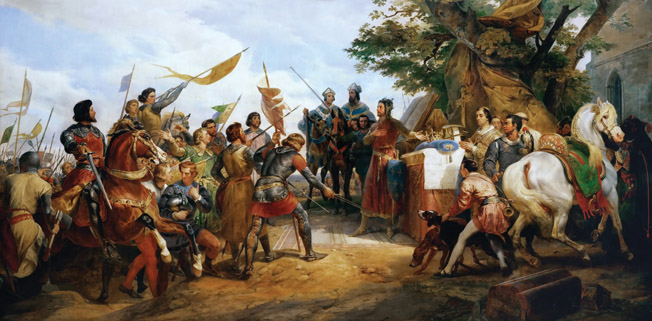
And if the pen is mightier than the sword, it certainly was proved in John’s case. History was written by churchmen, usually monks or friars, who were literate at a time when few people could read and write. They had a field day with John’s continuing woes, painting the maligned monarch in the darkest colors possible. For example, John probably did order the assassination of his nephew Arthur of Brittany, a teenager who was a rival and who flirted treasonously with King Philip. Not content with reporting the facts, the monkish chroniclers had John personally killing his nephew and disposing of the body, which was almost certainly not true.
John eventually threw in the towel, publicly submitting to Pope Innocent and, at least on paper, making England a fief of the pontiff. The act of submission was witnessed by all the barons in a public ceremony, which must have been humiliating for John.
And yet, in some cases, John had only himself to blame. If a vassal fell afoul of the king, he could treat him and his relations with great cruelty. For example, William de Briouz owed the king money, and so John had his wife and son imprisoned and literally starved to death. Any baron who did not want to go on campaign had to give scutage, a money payment in lieu of military service. John levied these fees no less than 11 times, so frequently it became almost a regular tax.
John managed to scrape together a coalition against Philip, only to see his allies (Holy Roman Emperor Otto IV, Count Ferrand of Flanders, and others) badly defeated by the French king at the Battle of Bouvines in July 1214. One of the rare large-scale battles of the period, Bouvines was catastrophic for John and negatively influenced his ability to rule as England’s king. King John spent heavily on the alliance to fund its battles. For that reason, the costly battle was the last straw for the barons, who rose up in rebellion. The result was the gathering at Runnymede, a traditional place for assemblies, where a reluctant John was forced to sign the Magna Carta.
The Magna Carta dealt mainly with feudal issues and had little to do with the daily lives of ordinary people. Nevertheless, it was still hugely significant because it established the principle that the monarch is not above the law. The great charter also set up a watchdog council of 25 barons whose duty was to ensure its provisions were followed to the letter. The council of committee was self-perpetuating and chose its own members. As things developed, only two were the king’s supporters, and some of his bitterest enemies were among the rest.
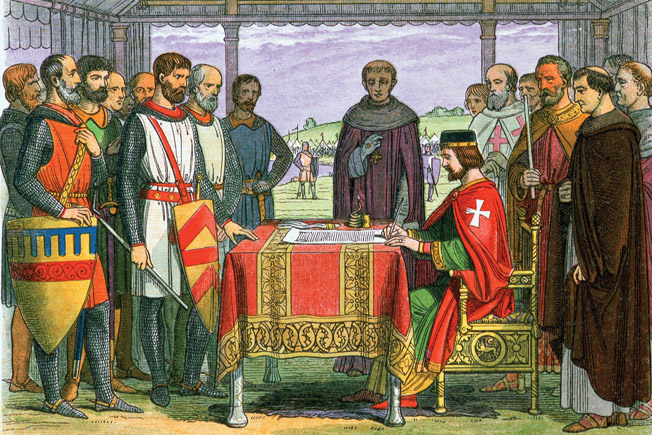
Within a short time some of the more headstrong barons began throwing their weight around. A few started to pillage and otherwise devastate royal manors, safe in the knowledge they had, or seemed to have, the upper hand. John had been arbitrary and extortionate at times; for example, he frequently took hostages to get what he wanted. With the creation of the new baronial council, it seemed that one tyrant had been replaced by a whole ravenous horde of them.
No medieval king would have put up with this for very long. If this arrangement continued, John would be a mere figurehead, a mere political marionette choreographed to dance to the barons’ tune. King John decided to make a bid to crush the rebels and restore his former power. He traveled to Dover, where he started to assemble an army capable of dealing with the barons by force of arms.
Dover, which was the closest city to the European continent, was an ideal location to gather an army because the king intended to recruit Flemish mercenaries who would form the core of his army. The Flemish mercenaries were tough, resourceful, and inured to hardship. If paid sufficiently and on time, they had a reputation for being steadfast and loyal.
The rebel barons controlled London, England’s capital, which was a major advantage in their war with the king. But the barons chose a bold course of action. They invited Prince Louis to take the English throne. Immediate political gain was more powerful than the nascent English nationalism that would not be fully developed until the 14th century, or even the 15th century. Louis accepted with alacrity; as a result, Pope Innocent, who by that time had become John’s ally, excommunicated the French prince.
The rebel barons made the first move in this game of sanguinary chess by taking Rochester Castle in October 1215. The castle stood across the road from London to Dover, so controlling it was of vital importance to both sides. William of Albini, who was one of 25 barons empowered by the security clause in the Magna Carta to use force against King John if he violated the charter, set out from Belvoir Castle on September 29 to occupy Rochester Castle before the king’s troops could secure it. Albini, who was newly recruited to the rebel cause, had a force of 95 knights and 45 men-at-arms. Upon his arrival, Albini was appalled at the state of the castle, which lacked provisions and even furniture. His men grabbed whatever scant supplies could be had from the locals before the royalist vanguard arrived.
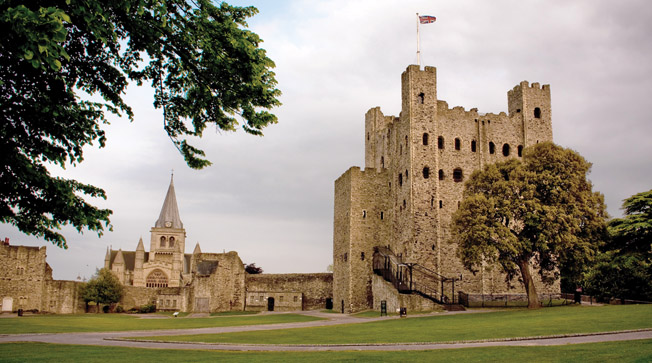
Rochester was important because it was the guardian of the Medway Bridge, a span that the old Roman road crossed on its way to London. John could little afford to have the rebels in possession of so strategic a location.
The king immediately grasped what was at stake and gathered what forces he could to take Rochester and its castle. The largely mercenary royal army, which included Flemish knights led by Robert of Bethune, arrived to start the siege on October 11. Meanwhile, King John instructed the castellans of the various castles still loyal to him to send what men they could spare.
“No one alive can remember a siege so fiercely pressed and so manfully resisted,” said the Barnwell Chronicler. John took personal control of operations two days later, and for a few weeks at least he was the ideal warrior king. He was energetic, brave, bold, and resourceful. His father, Henry II, and brother, Richard the Lionheart, would have been proud.
In this period John seemed everywhere at once, not one king but many, in his quarters writing dispatches, conferring with his knights, or personally supervising siege operations at great risk to himself. After all, his brother Richard had been killed by an infected crossbow wound that he suffered while supervising the siege of Chalus-Chabrol Castle in France in 1199.
John must have been a tempting target as he slowly rode around the siege lines. He probably was outfitted like most knights at that time. In all likelihood he wore a helmet, mail coif, and a mail hauberk. He also would have worn a surcoat emblazoned with his coat of arms. The king’s arms were three golden lions passant, or striding, on a bright red field.
It was the kind of design most people today associate with Richard the Lionheart, and it made the king stand out among his men, thereby endangering him. At one point during the siege, a crossbowman on the Rochester Castle parapet asked William of Albini if he “should slay the king, our bloody enemy, with this bolt that I have ready?” Albini was horrified. “No, far be it from us, villain, to cause the death of the Lord’s anointed,” he replied.
John had five siege engines assembled, and before long they were lobbing stones at the castle’s outer walls. The king, sizing up the situation, seemed to realize that the keep, the massive inner fortress, would not be reduced by such methods. John instructed the reeves in Canterbury to produce pickaxes for his miners. “As soon as you see this letter, make by day and by night all the pickaxes that you can,” he wrote. “Every blacksmith in your city should stop all other work in order to make them and you should send them to us at Rochester with all speed.”
The outer wall was breeched and after some desperate hand-to-hand fighting the bailey—the open ground between the walls and the keep—fell to John’s men. But many of the Rochester garrison managed to fall back to the keep, so the contest was far from over. It was at that point that John’s foresight paid a handsome dividend for he already had requested the tools necessary for successful siege mining.
Undermining was a technique by which a tunnel was dug underneath castle walls; in this case, the keep’s southwest tower. The excavation was temporarily shored up by timbers, just like a gold mine, and the diggers were careful to create a subterranean chamber under the tower’s base corners.
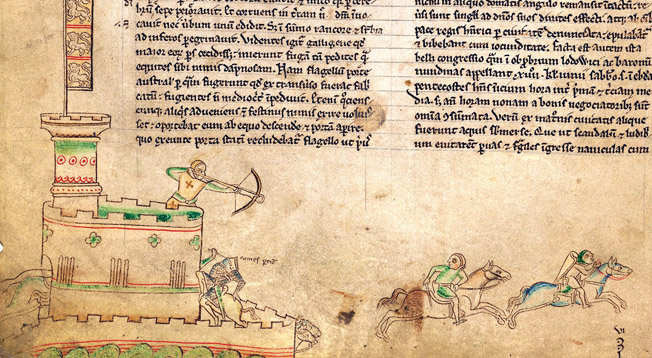
Next, ample amounts of pork fat would be smeared on the tunnel’s wooden scaffolding to promote fire. On November 25, 1215, John sent a writ to justiciar Hubert de Burgh with specific instructions. He told de Burgh to “send us by day and night, forty of the fattest pigs of the sort least good for eating that we may bring fire beneath the castle.” It was done, and after the pigs were slaughtered their fat was thickly applied to the beams. Torches set the wood alight, and before long the whole tunnel was a blazing inferno.
The burning beams gave way, and the tower collapsed with a deafening roar. John’s men surged forward, entering the keep, but found that there was a cross wall in the building that effectively divided it in half. Survivors of the garrison barricaded themselves on the other side of the cross wall.
The Rochester garrison held out for another few days, even eating horseflesh to fend off the specter of starvation. They finally capitulated on November 30.
The siege had lasted about seven weeks and had cost John many men-at arms as well as enormous amounts of money—perhaps as much as £1,000 a day. In no mood to be merciful, he wanted to hang the whole garrison. Dissuaded, he only sent one bowman to the gallows. The man had been in John’s service, and by this time John was bitter on the issues of loyalty.
John had every right to be proud of his achievement. The taking of Rochester Castle was a bright spot in the royal campaign and showed he was not entirely lacking in soldierly qualities. Next, the king decided to divide his army. A portion of his forces would watch London, the insurgent stronghold, while he harried the north, capturing rebel castles and stamping out the flames of rebellion there.
The king’s mercenary army had a field day. The king’s troops pillaged and burned every manor, village, and small town with gleeful abandon. Rebel manors were utterly destroyed, but if rebel barons submitted before the king’s troops arrived, their lands would be spared. They would be forgiven; that is, provided that they paid a large monetary fine for their transgressions.
So far things were going John’s way, but just over the horizon a greater threat loomed: Prince Louis of France. When Louis landed in England on May 21, 1216, he was welcomed as a kind of Gallic savior. Canterbury opened its gates to his army, and Rochester Castle, won after the loss of so much blood and treasure, fell back into rebel hands.
John’s kingdom seemed to be collapsing around him. London gave Louis an ecstatic welcome, and on June 2 its citizens and the Lord Mayor joined William FitzWalter in swearing allegiance to the French prince. Louis was proclaimed king at St. Paul’s cathedral, although not yet crowned. Scores of previously uncommitted barons and earls flocked to his fleur-de-lis banner. Even a teenaged King Alexander II of Scotland hurried south to pay him homage.
In the meantime, King John withdrew, retreating to Winchester before moving westward to Wiltshire and Dorset. The semi-fugitive king stayed at Corfe Castle for more than three weeks, apparently waiting for an opportunity to reverse his declining fortunes. While John remained inactive Prince Louis went from triumph to triumph. By some estimates Louis now controlled about half of England and had the loyalty, at least for the moment, of two-thirds of its feudal lords.
But there still remained Dover Castle, firmly held by de Burgh. He was not a mercenary but a native Englishman who hailed from Norfolk. As the castellan he was determined to hold Dover as long as he could. A veteran warrior, he had held Chinon Castle against Louis’s father, Philip Augustus, from 1204 to 1205. After a year Hugh was forced to surrender, but only after Chinon had been pulverized into a virtual ruin by French siege engines.
The French had imprisoned him, and his incarceration was a bitter memory, something, he said to his men, he did not want to repeat. With another French army before his walls, de Burgh declared he would rather die than surrender.
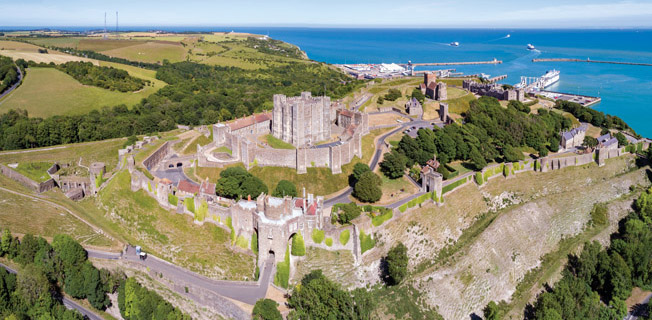
Dover Castle was one of the great fortresses of the Middle Ages. Its construction was originally begun by John’s father, Henry II. Henry recognized the strategic importance of Dover, situated as it was along the narrowest part of the English Channel. A scant 20 miles of water separated England from France at this point, and as such it was a natural avenue of invasion. There were some earlier fortifications on the site, but Henry to all intents and purposes was starting from scratch.
The famous white cliffs of Dover are only part of the story, for much of southeastern Kent is chalk. The castle site was well chosen for it is perched on a hill above jagged chalk cliffs. But chalk is a crumbly, unstable material, soft and liable to disintegrate in one’s hand; however, Henry had resources unavailable to other medieval princes. Indeed, the walls of Dover Castle bear mute testimony to the size of the Anjevin Empire. While some of the material, like Kentish ragstone, is from England, some of the white stone was imported from Caen in Normandy, which was one of Henry’s many Angevin possessions.
A second wall was eventually erected that encompassed the first, creating a layered defense that made Dover even more formidable. Dover Castle was the first concentric castle in England, meaning its fortifications had a common center. The center in this case was the keep, a great stronghold in its own right.
Henry spent £7,000 building Dover Castle. This was an enormous sum at the time, but the king’s prestige was on the line. Maurice the Engineer was the principal architect and planner, a man of real genius who added some bold innovations to traditional designs.
The keep or donjon was the heart of the castle, a stronghold in war and a palace in times of peace. It was almost a perfect cube, measuring 98 feet by 96 feet by 96 feet, its massive corners both anchored and guarded by four towers. A curtain wall encircled the keep, punctuated at intervals by 14 towers. A second, outer wall was even more formidable and may have featured as many as 20 towers in its heyday.
The twin-towered gatehouse was fronted by a large and rounded barbican, or outer work, made of sturdy oak. This wooden palisade also had a ditch that circled around it. One special feature of note was the Avranches Tower, a three-story affair that had three crossbowman positions on each level. Each individual position had three crossbow slits at different angles. That meant that nine crossbowmen could cover 27 fields of fire.
Because Dover Castle took some 30 years to build, its walls reflect the advances in military engineering. By the early 13th century it was discovered that round towers have two desirable qualities: they tend to deflect siege missiles, and they are much harder to collapse in mining. That was because of their foundation and weight distribution. Square towers were more vulnerable to undermining, especially at their corners. King John made sure that several of Dover’s towers were round, or at least “D” shaped, with the curved side facing outward.
Dover Castle was a bone in Louis’s throat, essentially blocking his line of supply, reinforcement, and communication with France. While de Burgh’s garrison could not turn the tide of war, they could stage harassing raids that might be quite effective. Even King Phillip Augustus was said to chide his son over his seeming lack of concern about Dover Castle. Prince Louis was at last stirred into action, but de Burgh had used the lull to good advantage.
De Burgh scoured the countryside for supplies, sending parties out near and far. Castle blacksmiths, whose arms glistened with sweat from blazing smithy forges, fashioned weapons and sharpened older ones to make sure they had a keen cutting edge. The air was filled with the sounds of hammering and sawing, a familiar cacophony in times of war. The noise came from carpenters and other workers constructing wooden roofed extensions known as hoardings that would add further protection to the garrison on the parapets.
Prince Louis and his army arrived in Dover on July 19, but the prince was in no hurry to start a formal siege; instead, he reconnoitered the castle from afar. He determined the only possible avenue was from the north side. But he probably was angered when the castle garrison defiantly rode out in full view, boldly daring the French to attack.
The siege opened with artillery barrages from the various siege engines Louis’s army had constructed. Chroniclers mention perriers and mangonels as being the main siege engines used when operations began. The perriers used smaller shot and were ideal as an antipersonnel weapon. A perrier was like a giant slingshot whose power was provided by a six-man crew simultaneously pulling on ropes.
The perrier worked on the principle of counterpoise. When the crew pulled on its ropes, the engine arm went forward and propelled the shot. By contrast, the mangonel was a kind of catapult that derived its power from the torsion created from a large skein of twisted rope or sinew, not human muscle.
The French also erected a wattle siege tower. Usually such towers were meant to be wheeled up to walls to give attackers access to the parapets. In this case, it seems this tower was simply a platform for crossbowmen to shoot down on the castle garrison that was manning the parapets.
While the siege engines began their bombardment, a cat was constructed and moved forward to a place near Dover Castle’s wooden outer palisade. The cat was essentially a moveable shed whose roof was covered in hides to make it less flammable. Louis’s cat protected miners, who began a tunnel under the palisade.
The wooden wall soon collapsed and French soldiers poured through the gap. It was said a knight named Huart de Paon was the first to mount the barbican breech, boldly planting the banner of his lord, the Lord of Bethune, in the process. One of the first barbican casualties was its captain, Pierre de Creon.
There was heavy hand-to-hand fighting, and those who could fell back to the main part of the castle. The wooden wall had been an extra protection, designed to buy some time and delay the attackers. It was not expected to fend off the French army indefinitely.
The main Dover Castle gatehouse was the next target for undermining. There is evidence that the Dover garrison tried to intercept the enemy tunnelers by means of countermining. If this were the case, then at the place where the two tunnels intersected, there would have been horrible, almost surreal bloodshed amid cramped spaces and by the light of flickering torches. Sources suggest that this battle deep in the bowels of the earth was won by the French because their tunnel continued on its way to the tower.
The tunnel was put to the torch, the beams burned, and the east gatehouse tower collapsed. Once again French knights and men at arms surged forward, this time clambering up the rubble of the collapsed tower, all the while subjected to a rain of crossbow bolts. But once they reached the collapsed tower summit, a new and shocking surprise awaited them. De Burgh had hastily erected a makeshift inner wall of timbers to bar their way.
The fight at the collapsed tower was a bloodbath, with the fate of England hanging precariously in the balance. Medieval warfare was quite literally butchery, where chivalry was forgotten and the main object was to take down your opponent by any means possible. Mail offered decent protection, but heavy blows from a mace, axe, or war hammer might break an arm or leg and leave an opponent helpless.
Faces were not covered, and a polearm thrust or sword slash might leave deep and horrific wounds to the jaw or skull. Legs and feet also were targets. Once an opponent was on the ground, he could be dispatched quickly or finished off with a dagger thrust later.
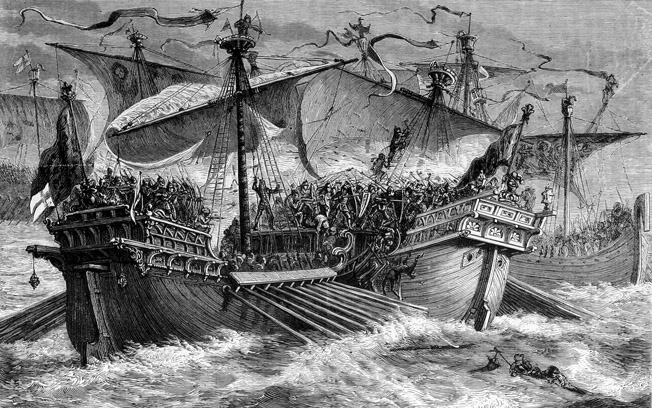
Meanwhile, the first stirrings of a national feeling began to manifest themselves in some popular resistance. Prince Louis had only half his army at Dover; the rest was scattered around southwestern England. The Gallic invaders aroused the peasant population by pillaging villages and abusing, even raping, their inhabitants. French detachments were soon set upon by enraged English partisans.
The Weald, which was situated directly west of the castle, was a vast forested area that covered much of Kent and Sussex, ideal cover for bands of archers and woodsmen who attacked French foraging parties, then slip back into the forest. After three months, Prince Louis had had enough of Dover Castle. He signed a truce pact with de Burgh, lifted the siege, and marched away frustrated and probably angry. But the real turning point came when John unexpectedly died of dysentery on October 18. Royalist supporters, most especially the famous knight William Marshal, moved swiftly to have John’s nine-year-old son Henry crowned king.
The young boy was an attractive alternative to Louis. He was only a lad, unburdened by his father’s political sins, and above all he was native English. The English began to look askance at French arrogance and frequent depredations. Before long the pendulum swung to young Henry III’s favor, and more barons returned to the English royalist fold.
Louis might have been down, but he was not quite out. The prince decided to besiege Dover Castle yet again, confirming its vast importance in securing England. The second siege commenced in May 1217, and this time Louis brought a trebuchet, a powerful counterweight siege engine that could hurl stones weighing up to 300 pounds. This particular machine had a grimly humorous nickname, Malvoisin, meaning bad neighbor.
The second siege lasted only 10 days, brought to an end by a series of heavy blows to the French cause. First, Malvoisin seemed to have little effect on Dover’s fortifications. Perhaps it would have smashed the walls if given time, but time was something Louis simply did not have. Second, his siege camp was being harried by partisan English bowmen, and there seemed no means of stopping their raids. English ships also were blocking the coast, cutting off his supply line from France.
But then Louis received bad tidings: his main army and his English supporters had been decisively defeated at Lincoln by royalist forces under the command of William Marshal. Negotiations opened, and Louis finally gave up his claim to the English throne and returned to France. A substantial payment from the English also helped assuage his royal disappointment.
Dover Castle’s stout defenses and stubbornly courageous garrison had not only thwarted an invasion, they had saved the Plantagenet dynasty, which would rule in one way or another until 1485. The fortress lived up to its reputation as the “Key to England.”
